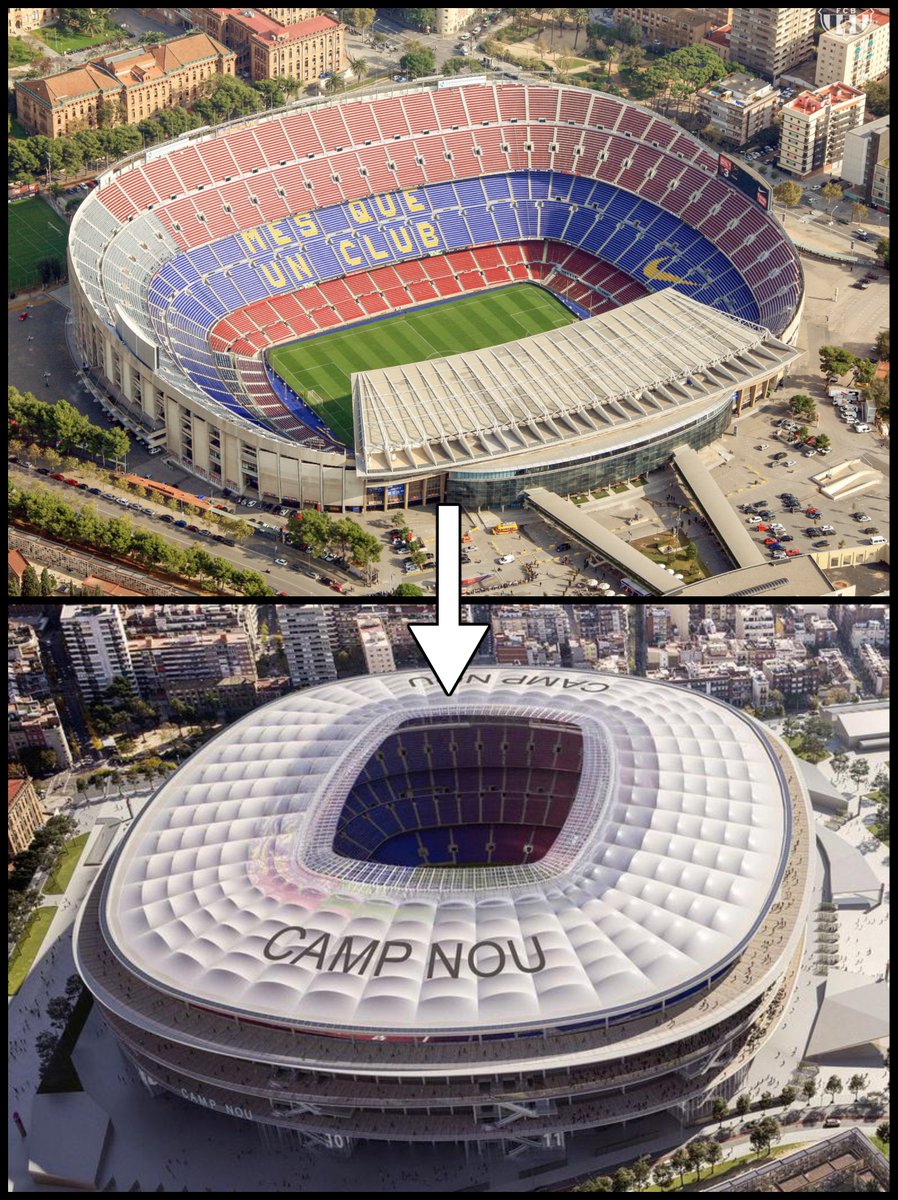The Kiss, painted by Francesco Hayez in 1859, is surely one of the most perfect portrayals of romance in history.
But it also has a hidden political message.
This is the story of The Kiss — and how art can mean more than one thing at once...
But it also has a hidden political message.
This is the story of The Kiss — and how art can mean more than one thing at once...

Francesco Hayez, the son of a Venetian fisherman, was born in 1791.
Despite his humble origins the young and talented Francesco won a scholarship — in 1809 he went to study in Rome.
And in 1823 he moved to Milan, where he became one of the leading artists of his generation.
Despite his humble origins the young and talented Francesco won a scholarship — in 1809 he went to study in Rome.
And in 1823 he moved to Milan, where he became one of the leading artists of his generation.

In Milan Francesco found constant patronage among the nobility and political classes, especially Italian nationalists.
There were three main genres he worked in.
First were historical and religious paintings, such as the Destruction of the Temple at Jerusalem:
There were three main genres he worked in.
First were historical and religious paintings, such as the Destruction of the Temple at Jerusalem:
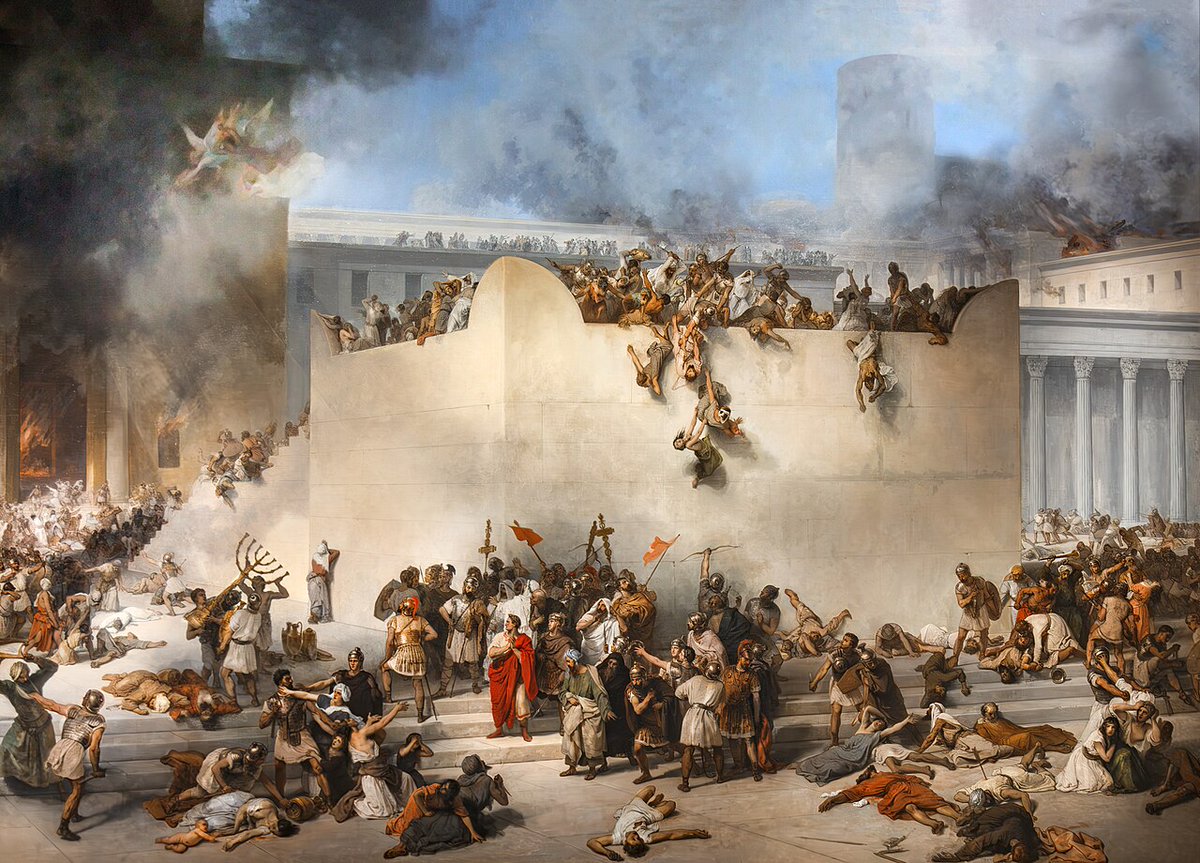
Many were Classical or Biblical history, and even Classical mythology, along with Crucifixions and paintings of Christ.
But Hayez also emphasised episodes from Italian history, bringing his eye for smooth Neoclassical finishes and Romantic drama to these historical panoramas:
But Hayez also emphasised episodes from Italian history, bringing his eye for smooth Neoclassical finishes and Romantic drama to these historical panoramas:
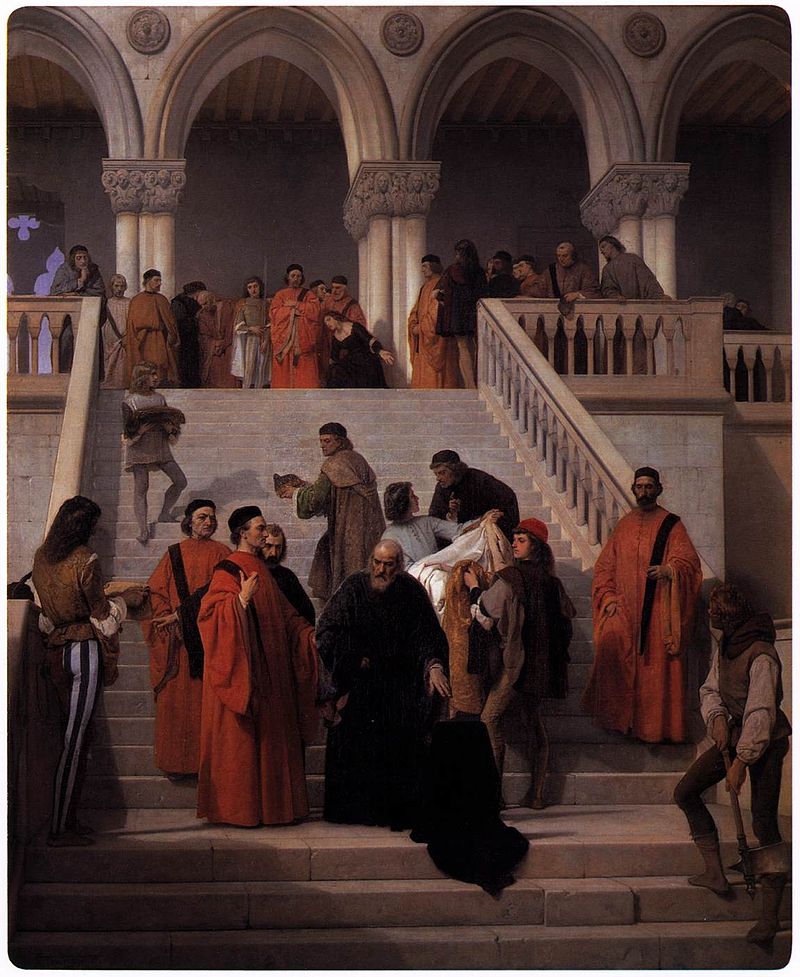
Then there were the portraits.
Here we see Hayez the technical master, who was able to conjure paintings with an almost photorealistic level of detail.
Little wonder he was so popular among the nobility, politicians, and artists of Milan:


Here we see Hayez the technical master, who was able to conjure paintings with an almost photorealistic level of detail.
Little wonder he was so popular among the nobility, politicians, and artists of Milan:


Then there was a third type, best seen in his Revenge Triptych, which tells the story of a woman enacting vengeance on her lover.
But it is more than that: it is allegorical and mysterious, mixing history with an allusive, symbolic quality.
We ask, "what does this really mean?"
But it is more than that: it is allegorical and mysterious, mixing history with an allusive, symbolic quality.
We ask, "what does this really mean?"
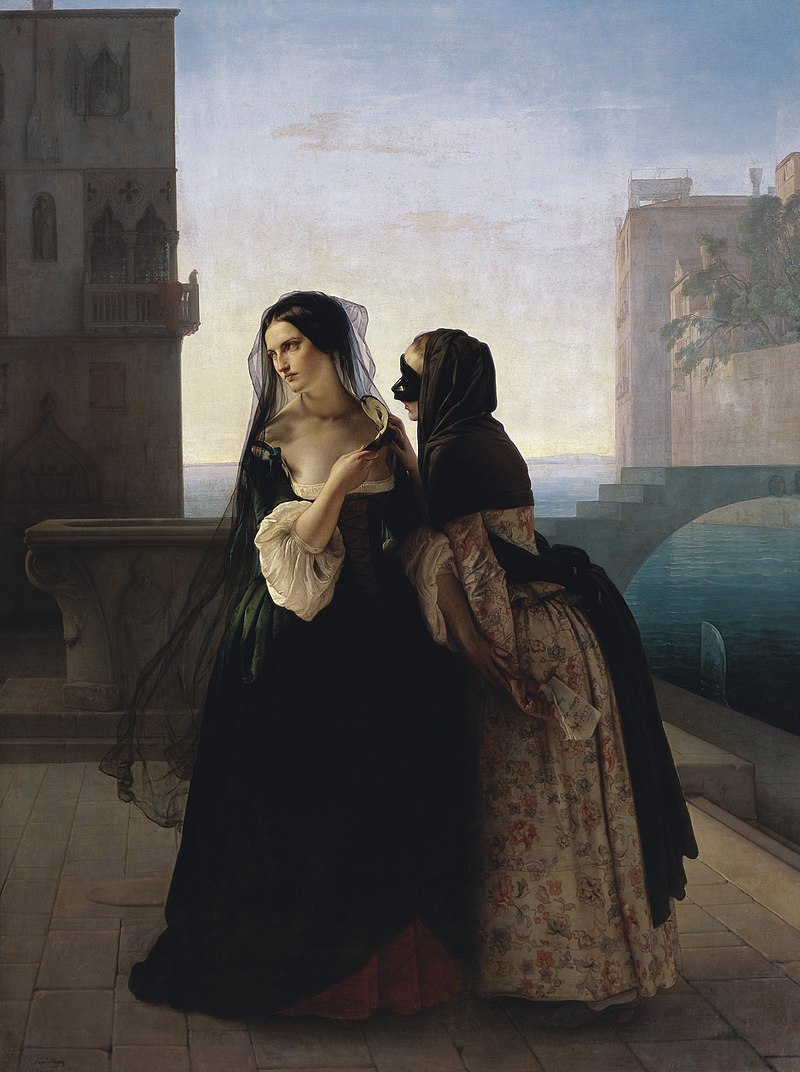
The Kiss, painted in 1859 for Count Alfonso of Saliceto, is one of this type.
It is perfect in its ambiguity — we do not see specific historical figures but a generic Medieval couple whose stories we can imagine, onto whom we can freely project our own feelings and thoughts.
It is perfect in its ambiguity — we do not see specific historical figures but a generic Medieval couple whose stories we can imagine, onto whom we can freely project our own feelings and thoughts.
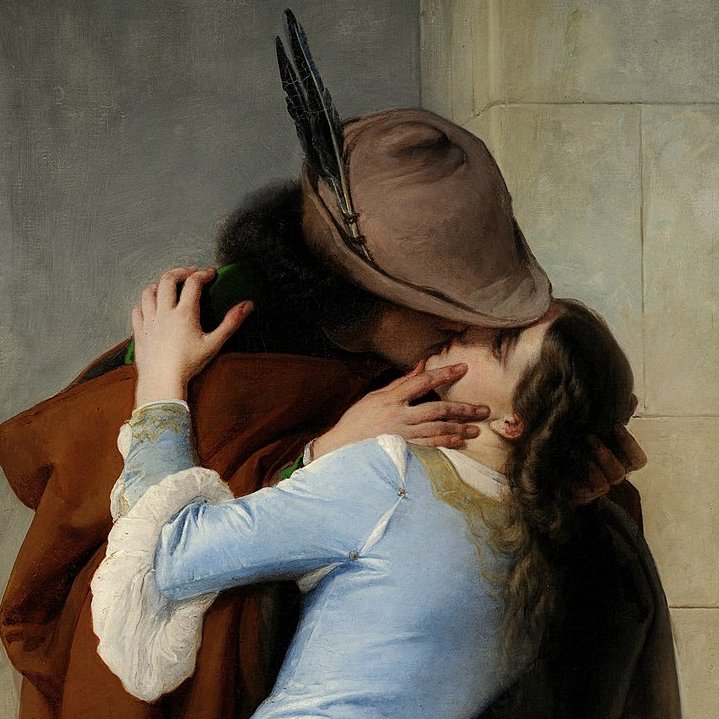
And the first thing we think is... what a perfect portrayal of romance!
The pale colour of the background acts as a canvas for the colourful clothes of the lovers, and its very simplicity focusses our attention on their embrace.
Simple, subtle, powerful composition.
The pale colour of the background acts as a canvas for the colourful clothes of the lovers, and its very simplicity focusses our attention on their embrace.
Simple, subtle, powerful composition.

And so, regardless of context or hidden meaning, we can place it alongside something like The Kiss by Klimt as a romantic masterpiece.
Hayez brings his technical mastery and photorealistic detail without losing any sense of a dramatic, almost fantastical, heightened reality.
Hayez brings his technical mastery and photorealistic detail without losing any sense of a dramatic, almost fantastical, heightened reality.
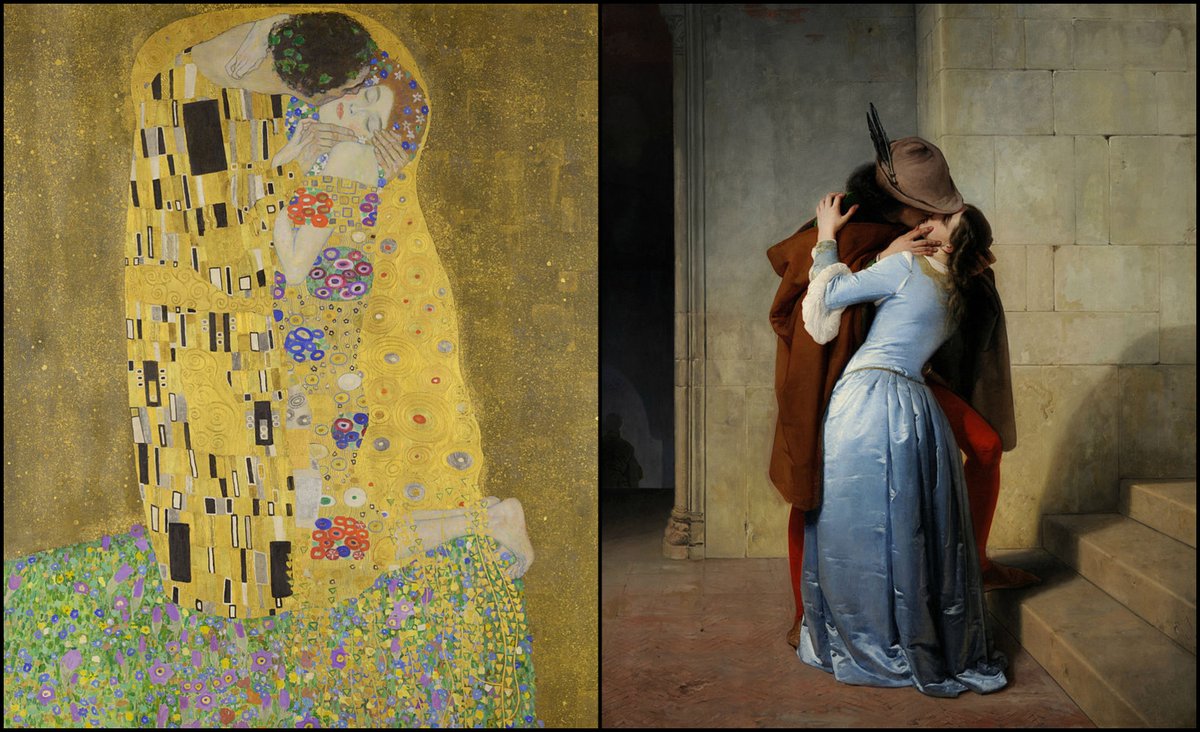
But there *was* a context to Hayez's Kiss.
See, in 1859 Italy was divided into separate states and kingdoms — there was no single country called "Italy".
But, ever since the end of the Napoleonic Wars in 1815, there had been a growing movement in favour of Italian unification.
See, in 1859 Italy was divided into separate states and kingdoms — there was no single country called "Italy".
But, ever since the end of the Napoleonic Wars in 1815, there had been a growing movement in favour of Italian unification.

This movement was part of a broader geopolitical struggle between the Great Powers of Europe, especially France and the Austrian Empire.
The Austrians did not want Italian unification; they wanted to dominate the peninsula.
France, meanwhile, would benefit from Italian unity.
The Austrians did not want Italian unification; they wanted to dominate the peninsula.
France, meanwhile, would benefit from Italian unity.
Underground nationalist groups emerged and there were riots and revolts until, in 1849, the First Italian War of Independence broke out — alas, it ended in Austrian victory.
But ten years later came the Second Italian War of Independence...



But ten years later came the Second Italian War of Independence...
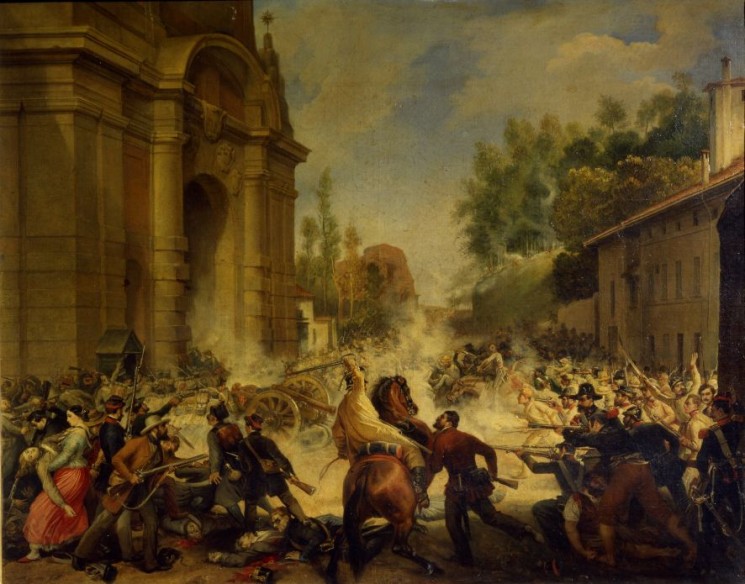


So one potential meaning of The Kiss is that we see a soldier bidding farewell to his love before setting out for battle.
Suddenly the context changes and it becomes charged with ideas of patriotism and sacrifice.
And we wonder... what is that shadow lurking in the corner?
Suddenly the context changes and it becomes charged with ideas of patriotism and sacrifice.
And we wonder... what is that shadow lurking in the corner?

But there's more — in 1859 Napoleon III of France had signed an agreement with Count Cavour, Prime Minister of the Kingdom of Sardinia.
This would be the turning point, they hoped, to bring about victory in the war with the Austrians.
France might be Italy's saviour!


This would be the turning point, they hoped, to bring about victory in the war with the Austrians.
France might be Italy's saviour!


Count Alfonso specifically asked Hayez to paint something that embodied these fresh hopes for the future of Italy.
Notice the colours of the clothes in The Kiss: red, white, and blue... the French flag!
This is an allegorical kiss representing union between France and Italy.
Notice the colours of the clothes in The Kiss: red, white, and blue... the French flag!
This is an allegorical kiss representing union between France and Italy.

And, going further, the kiss might represent unity in a more general way — the union of the Italian kingdoms into a single state.
Suddenly what seemed like a purely romantic painting becomes a potent political symbol, rich with ideas of nationhood, brotherhood, and freedom.
Suddenly what seemed like a purely romantic painting becomes a potent political symbol, rich with ideas of nationhood, brotherhood, and freedom.

In the second version of The Kiss, painted after the official unification of Italy in 1861, Hayez includes a white cloth on the steps by the couple and gives the man a green cloak.
Now we have green, white, and red... the Italian flag!
(& blue for France also remains in thanks)
Now we have green, white, and red... the Italian flag!
(& blue for France also remains in thanks)
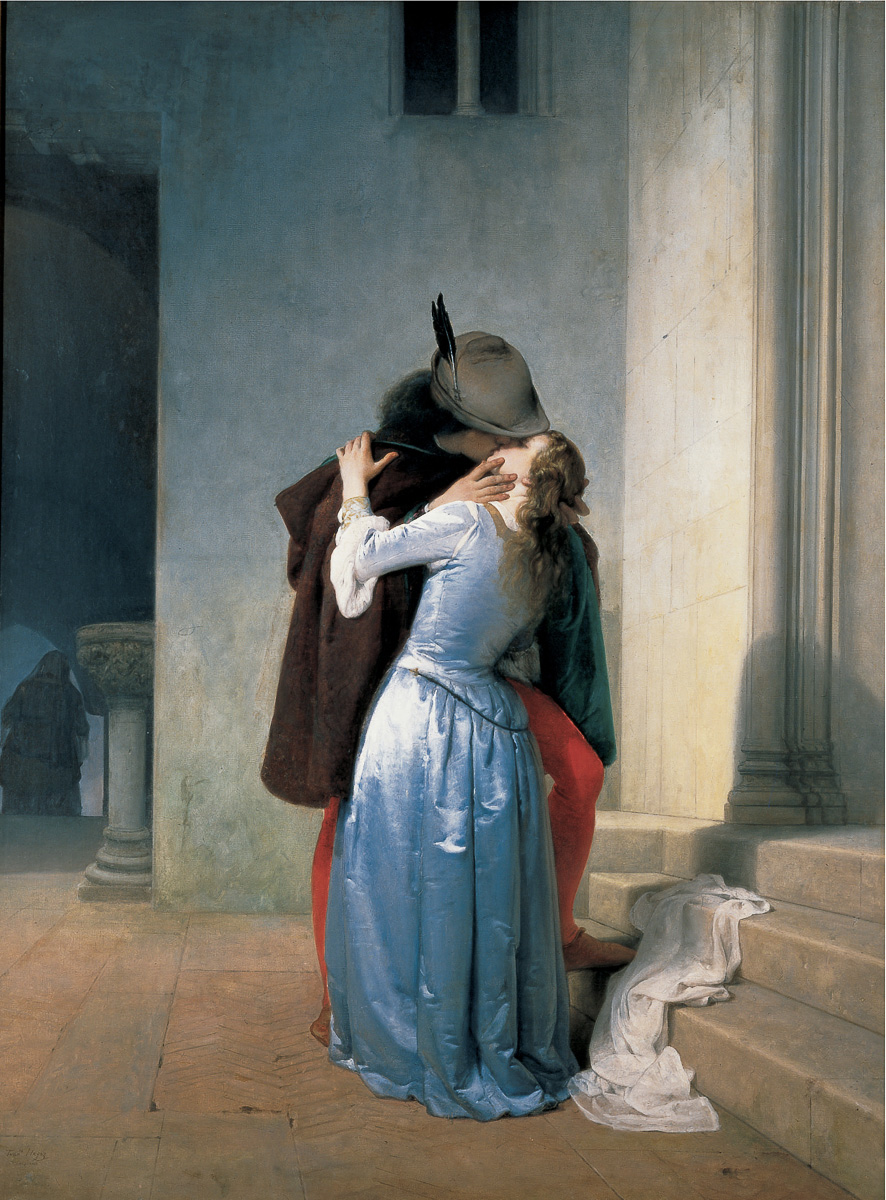
Little wonder, then, that The Kiss quickly became a symbol of the Risorgimento — meaning "Resurgence", the unification movement as a whole, politics and culture together.
It has featured in other paintings, films, advertising, and graffiti, and is still as iconic as ever.
It has featured in other paintings, films, advertising, and graffiti, and is still as iconic as ever.
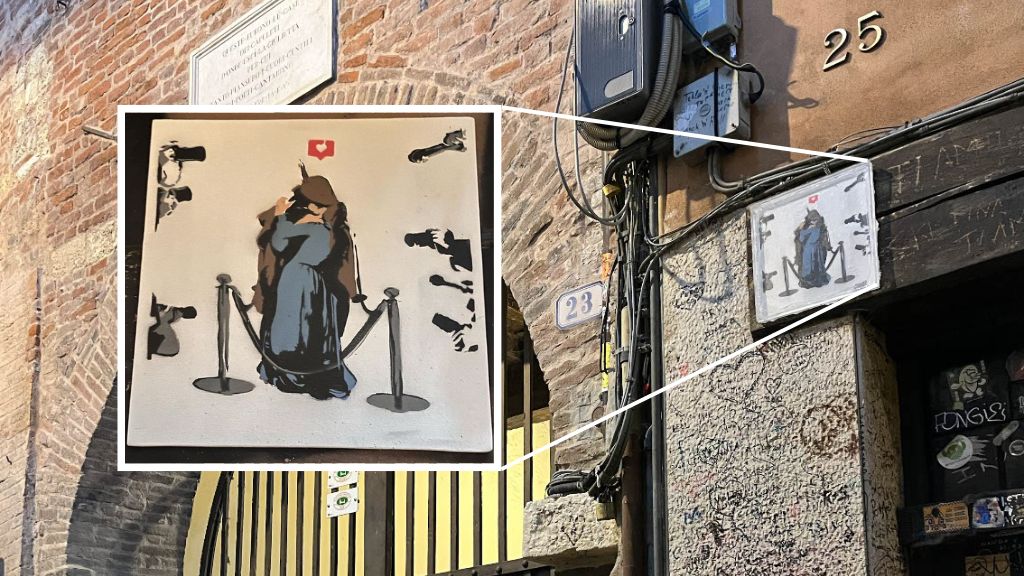
The Kiss is a wonderful example of how the meaning of a work of art can change depending on how much you know about it.
And it reminds us that no interpretation is "correct" —The Kiss can be nothing more than a pure evocation of how the world disappears in the ecstacy of love.
And it reminds us that no interpretation is "correct" —The Kiss can be nothing more than a pure evocation of how the world disappears in the ecstacy of love.
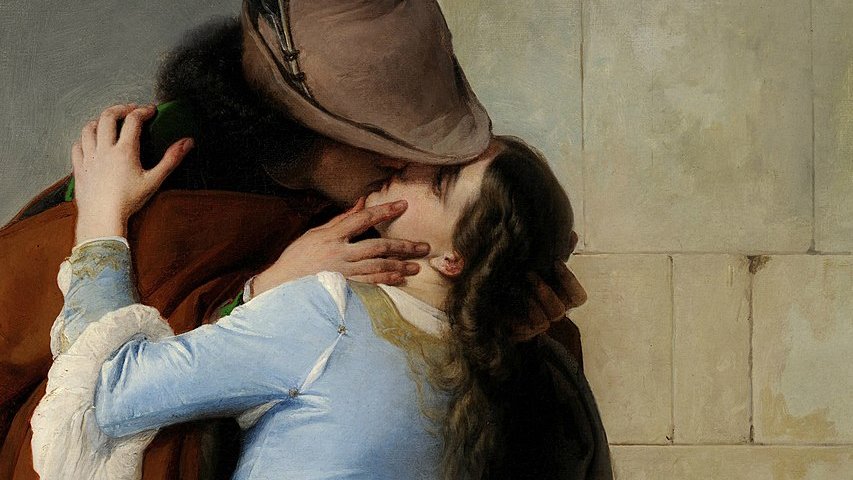
Or it can be a symbol of the Italian unification movement, the Risorgimento, or even of the country of Italy itself — or it can represent patriotism, sacrifice, unity, and peace in any place or time.
...and is this not the wonder of art, the thing that inevitably compels us?
...and is this not the wonder of art, the thing that inevitably compels us?
A painting can, even regardless of what the artist intended or the context it was made in, mean a thousand different things to a thousand different people.
John Ruskin explained this perfectly when comparing science and art:
John Ruskin explained this perfectly when comparing science and art:

• • •
Missing some Tweet in this thread? You can try to
force a refresh





